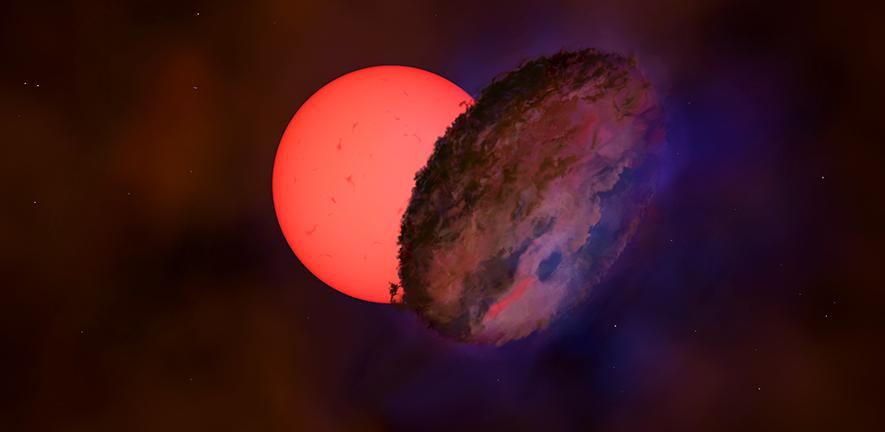Mysterious shadow hides giant star
VVV-WIT-08 is a red giant star with 100 solar masses and 25,000 light years away from us. Ten years ago (25,010 years ago, of course) its brightness suddenly decreased drastically – down to one-thirtieth of its original value. There are indeed variable stars. In certain phases of life many types of stars show spontaneous changes. However, such a large decrease as in VVV-WIT-08 is rare. It speaks for the fact that the cause was not in the star itself, but in its environment. Did another object move in front of the star for a few hundred days and darken it?
This was the idea pursued by an international team led by Dr. Leigh Smith of the Cambridge Institute of Astronomy, who collaborated with scientists from the University of Edinburgh, the University of Hertfordshire, the University of Warsaw in Poland and the Universidad Andres Bello in Chile. Because the star is located in a dense region of the Milky Way, the researchers initially considered whether an unknown dark object might have simply drifted in front of the giant star by chance. However, simulations showed that there would have to be an implausibly large number of dark bodies floating around in the galaxy to make this scenario likely.
No, the object must be orbiting in the star system of VVV-WIT-08. The researchers calculated that it must have a diameter of at least 0.25 astronomical units (equivalent to a quarter of the distance from Earth to the Sun). Its shadow, which fell on the star from our perspective for a few hundred days, had an elliptical shape. This suggests that it could be a spherical object with a disk. However, the researchers can’t say much more yet. “It is amazing that we have just observed a dark, large and elongated object passing between us and the distant star, and we can only speculate what its origin is,” admits then co-author Dr. Sergey Koposov of the University of Edinburgh.
